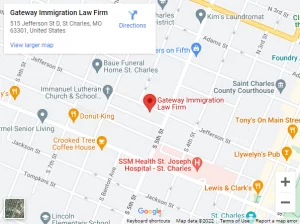Gateway to Success: Your Guide Through the Green Card Bulletin
Looking to the future and longing for a fresh start in a new land? The Green Card Bulletin might hold the key to your American dream. But what exactly is the Green Card Bulletin? This bulletin, officially known as the Visa Bulletin, is a monthly publication by the U.S. Department of State that outlines the availability of immigrant visa numbers.
Understanding the Green Card Bulletin is crucial for those seeking lawful permanent residence in the United States. It can help you plan your immigration journey and know when you might be eligible to take the next step toward living and working in the land of opportunity.
Quick Summary
- The Green Card Bulletin is a monthly publication by the U.S. Department of State that shows visa availability and cutoff dates for green card applicants.
- It helps determine eligibility by showing which visa categories and countries have visas available based on priority dates.
- It allows for planning and managing expectations by providing insight into potential waiting times based on your situation.
- The Visa Bulletin uses two charts:
- Final Action Dates Chart: Shows when you can get your green card based on your priority date (if current).
- Dates for Filing Chart: Shows when you can submit your green card application (even if the final action date isn’t current yet).
- Understanding the letters in the charts:
- “C” (current): There are enough visas available, so your application can be processed quickly.
- “U” (unavailable): No more visas are available for that year; you’ll have to wait until the next allocation period.
- What to do when your priority date is current:
- If you’re outside the U.S., contact the National Visa Center (NVC) for instructions.
- If you’re already in the U.S. and eligible to adjust status, you can submit your application to USCIS.
What is the Visa Bulletin?
The Green Card Bulletin (also called the Visa Bulletin) comes out monthly from the U.S. Department of State. It tells you two important things:
- Are there any green cards left? There’s a limit on how many green cards the U.S. can give out each year. The Bulletin shows how many are available in each category (like work visas or family visas).
- When can you apply? The Bulletin also has cutoff dates. If your “place in line” (priority date) is earlier than the cutoff date for your category, you can move forward with your green card application.
Think of it like a waiting list:
- The number of green cards is limited, so there’s a wait.
- The Bulletin shows how long the wait might be for your situation (based on your category and birth country).
- It also tells you when it’s your turn to move forward with your application.
Why is the Green Card Bulletin Important?
The Green Card Bulletin, also known as the Visa Bulletin, plays a crucial role in the immigration process for those seeking lawful permanent residence in the United States. It provides vital information about visa availability and cutoff dates, guiding individuals through the complex green card application process.
Determining Eligibility
The Bulletin shows how many green cards are available in different categories (work visas, family visas, etc.) and for people from different countries. This helps you see if there’s an opening for you right now.
Planning and Preparation
By checking the Green Card Bulletin regularly, individuals can plan and prepare for their green card application process. They can anticipate when they might be eligible to file the final steps of their application, either through adjustment of status or consular processing.
Managing Expectations
Waiting times for green cards can vary depending on country of birth or visa category. The Bulletin helps you guess how long you might wait by showing how many people are ahead of you in line.
How Does Visa Bulletin Break Down the Availability of Immigrant Visas?
The Visa Bulletin breaks down the availability of immigrant visas according to:
Priority Date
The “priority date” is like your “place in line” for a green card. It’s set when your PERM Labor Certification is filed with the Department of Labor (DOL), or if you’re exempt from PERM when your I-140 petition is filed with U.S. Citizenship and Immigration Services (USCIS).
Preference Categories
Various groups of employment-based immigrants receive different numbers of visas each year.
EB-1 (First Preference)
The EB-1 category is for highly skilled people like scientists or athletes. They often have shorter waits because there are fewer people in line.
EB-2 (Second Preference)
The EB-2 category is for professionals with advanced degrees or skills. They may have to wait longer, especially if they’re from a country with many applicants. National Interest Waivers (NIW) are included in this category.
EB-3 (Third Preference)
This category is for professionals with a U.S. bachelor’s degree, skilled workers with at least two years of experience, and other workers with less than two years of experience. Waiting times can be long, especially for applicants from densely populated countries, due to high demand.
Per-Country Caps
There’s a cap on how many visas each country gets each year. This helps spread things out fairly. Countries like India and China often have longer waits because more people from there apply.
How to Find Out My Priority Date for an Immigrant Visa?
All people applying to immigrate in the preference categories have a Priority Date. This date determines their place in line for a U.S. immigrant visa.
- The date when your family petitioner (a U.S. citizen or lawful permanent resident) filed Form I-130, and USCIS accepted it for processing.
- The date when your U.S. employer-petitioner’s labor certification request was received and accepted for processing by the Department of Labor, followed by USCIS approving Form I-140, also filed by the employer.
- If you’re applying in a preference category that doesn’t need a DOL labor certification, the date USCIS received and accepted your Form I-140 petition for processing.
Why Are There Two Charts in the Visa Bulletin?
The Visa Bulletin has two main charts for people applying for visas based on family connections and work.
1. Final Action Dates Chart
This chart tells you when you can get your actual green card, based on your “place in line” (priority date).
- If your priority date is earlier than the date listed for your category, you’re good to go! USCIS can now make a final decision on your application.
- This means you might get your green card interview scheduled (if applying abroad) or receive your green card directly (if applying within the U.S.).
2. Dates for Filing Chart
This chart lets you know when you can submit your application to adjust your status to a green card holder, even if you can’t get the card yet.
- Think of it as a heads-up to gather your documents and get ready.
- Once your priority date becomes current (based on the Final Action Dates chart), your application can be processed quickly because you’ve already submitted it.
Green Card Bulletin: Decoding the Letters
The Green Card Bulletin can be confusing with letters instead of dates. Here’s what they mean:
- “C” (current): This is good news! There are enough green cards available in your category right now, so there’s no wait. You can apply for your green card as soon as you meet the other requirements.
For example, in 2023, the wait time for a certain family visa category was really long. But then the Bulletin showed a “C” for months. This meant people in that category could apply for their green card right away.
- “U” (unavailable): This means all the green cards for your category are gone for this year. You’ll have to wait until the next visa allocation period starts (usually in October) to try again.
Signing up for the monthly Green Card Bulletin email can help you stay on top of your progress and any changes in the letter codes.
What to Do If My Priority Date is Current?
Your wait might be over! If you see a recent date or the letter “C” next to your category on the Green Card Bulletin’s “Dates for Filing” chart, it means your “place in line” (priority date) is current. Here’s what to do next:
Outside the United States
- Contact the National Visa Center (NVC) for instructions on how to move forward with your immigrant visa application. Don’t wait for them to reach out to you first.
Already in the United States
- You can apply to adjust your status to a green card holder (by filing Form I-485 with USCIS) as long as USCIS allows you to use the current filing date on the Bulletin. Don’t wait for an invitation!
- If your sponsor didn’t tell USCIS earlier that you’d be adjusting status, let the NVC know you’re in the U.S. and want to adjust status. They can then send your file to USCIS.
Even if you submit your application, you won’t get your green card until your priority date is also current on the “Application Final Action Dates” chart.
Your Trusted Legal Partner in Navigating the Green Card Bulletin
Understanding the Green Card Bulletin is crucial for obtaining lawful permanent residence in the US. Gateway Immigration Law Firm can guide you through this process, ensuring you know your options and rights.
Our immigration lawyers in Missouri are here to assist you in navigating the system and achieving your American dream. Contact us today for help with the Green Card Bulletin or any immigration matter.
We can also represent you in Adjustment of Status, Amnesty, and Diversity Visa. Let us help you navigate the path to a brighter future in the United States.







